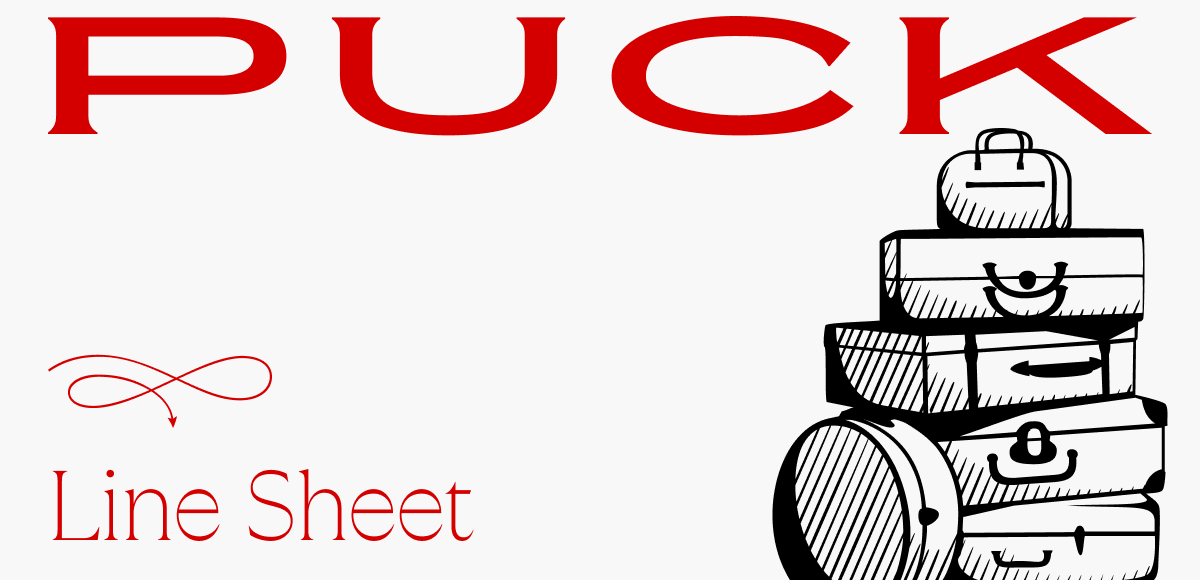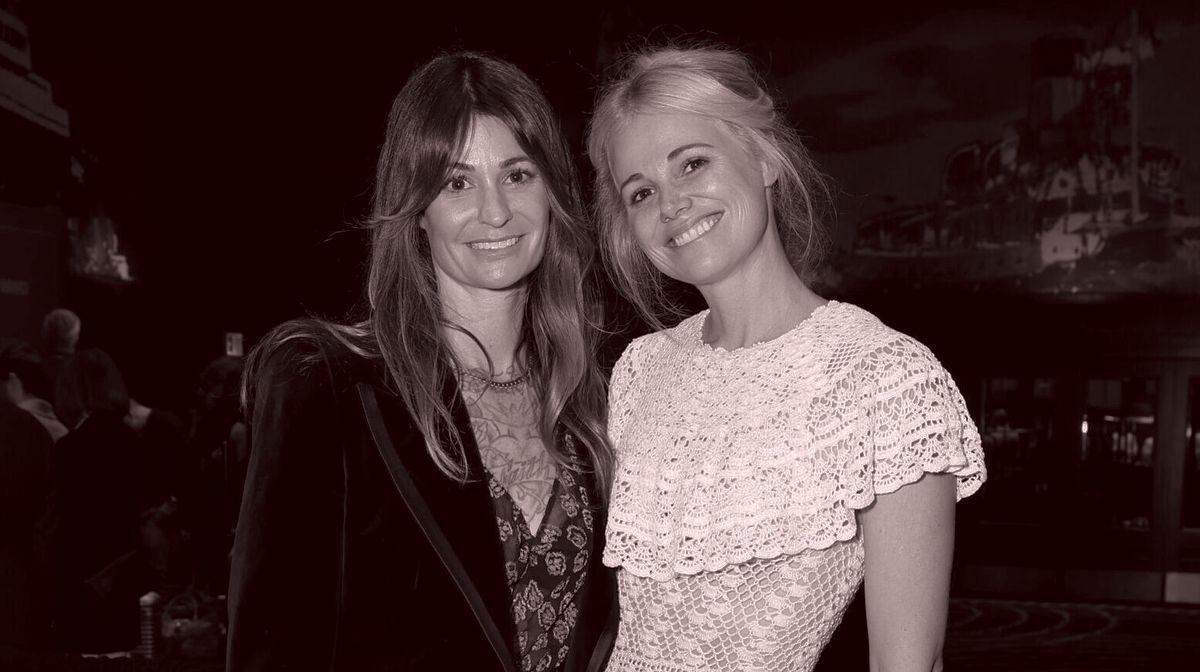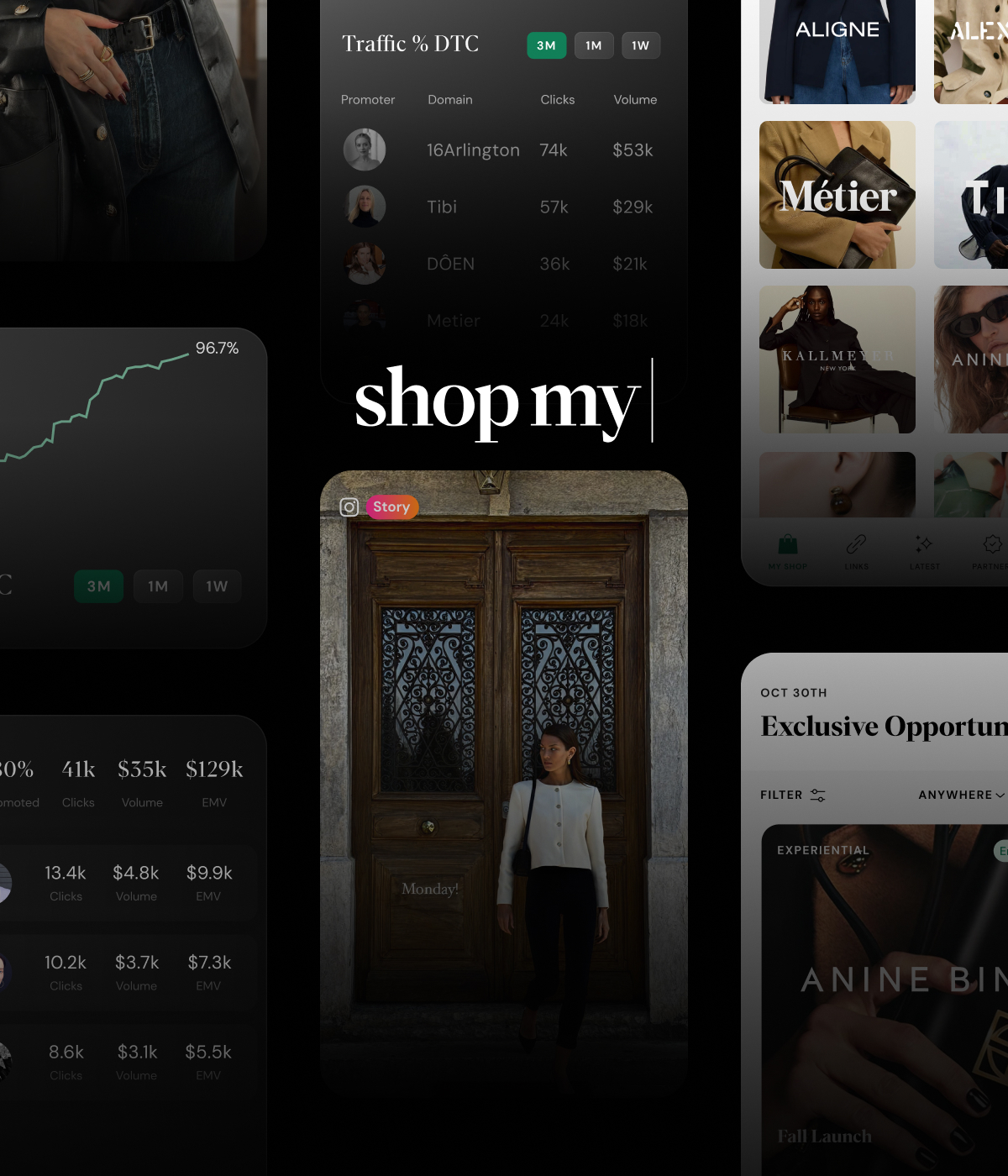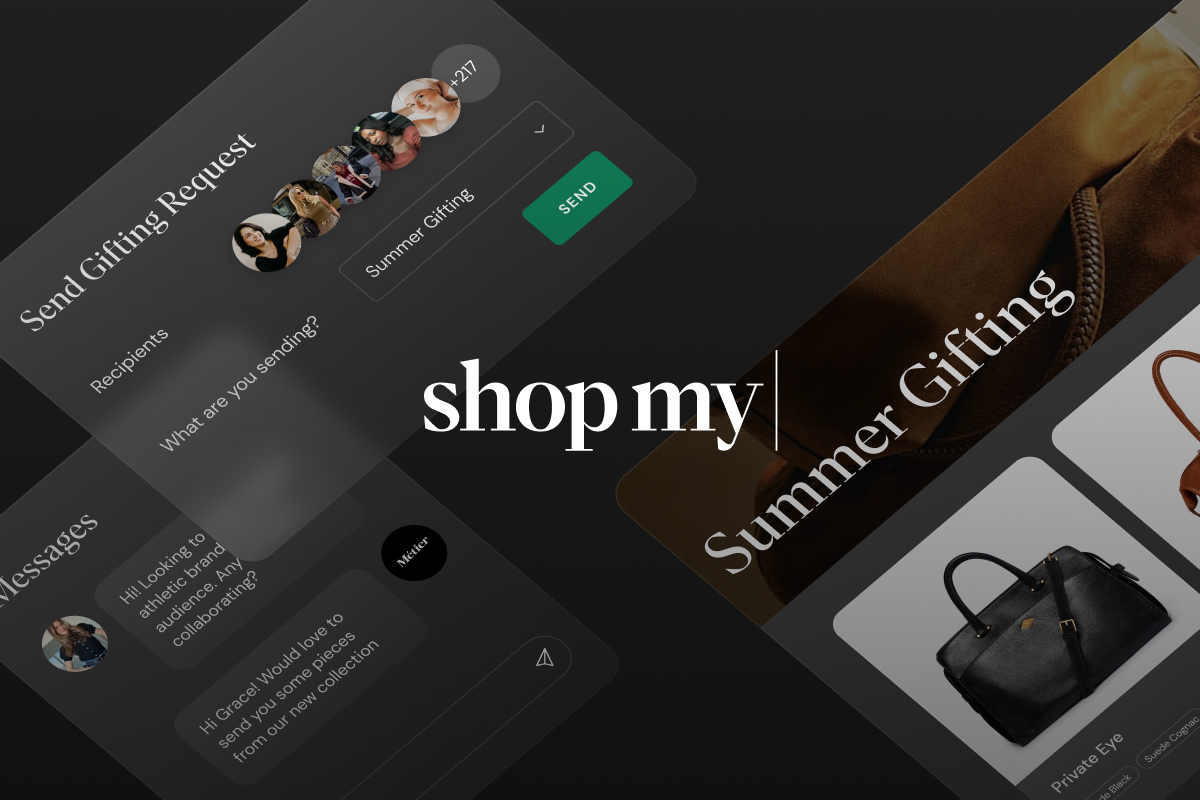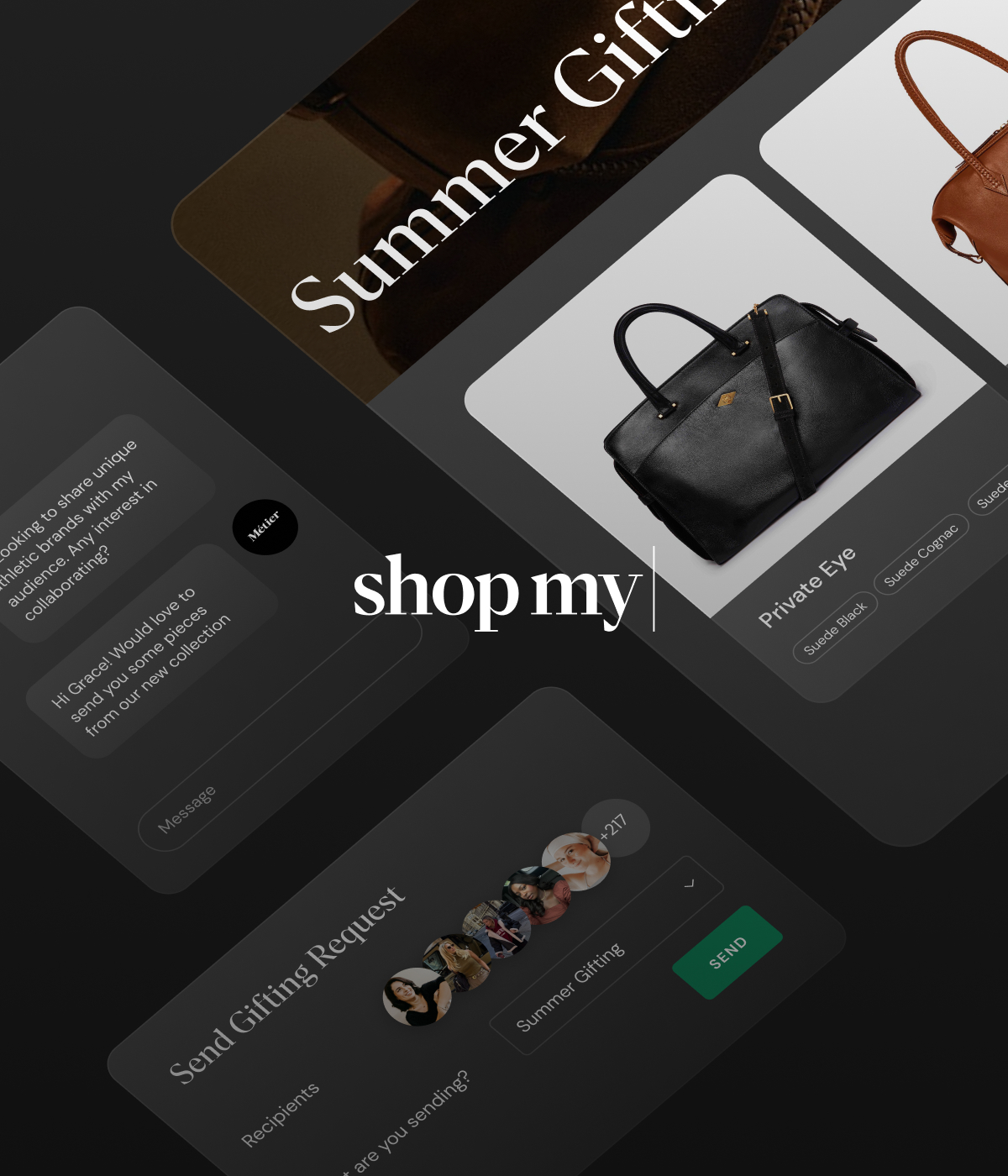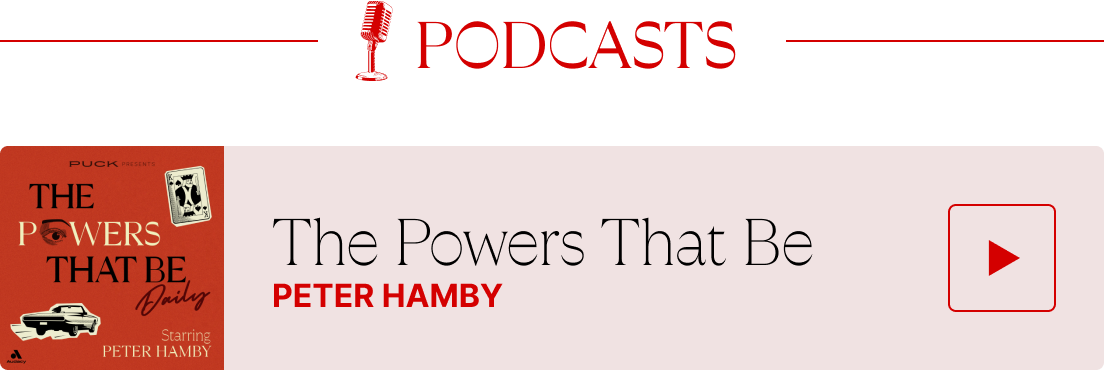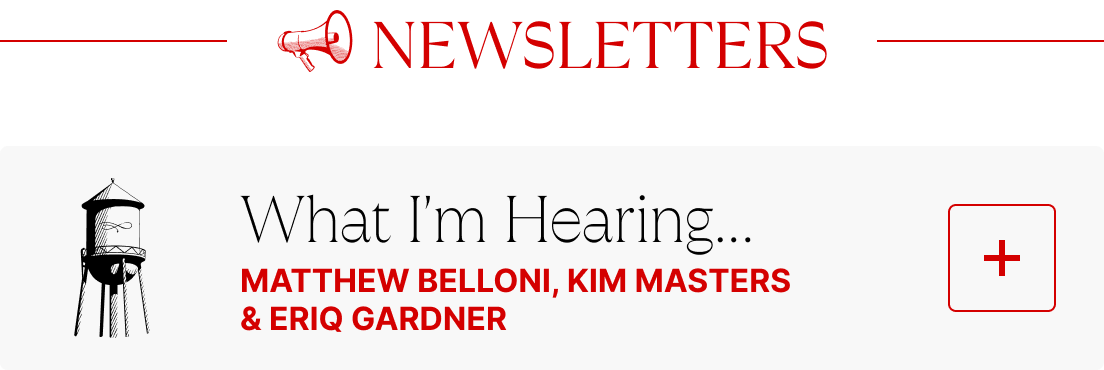Hi, and welcome back to Line Sheet. Paris hit the ground running this season,
despite the incomplet feeling of the schedule.
After Pieter Mulier’s extraordinary Alaïa show in the 11th (more on that tomorrow) on Tuesday night, editors headed over to the Grand Dîner du Louvre, a fundraiser in celebration of the museum’s first major fashion exhibit. Tables cost just €50,000, but the party raised more than a million euros, impressive by European
standards, I’m told. (The proper ball happens this summer, at the close of the show.)
For those who are really in it right now, I’ve got updates on Gucci and the situation at LVMH that I wrote about yesterday. But more importantly, Sarah “SShapiro@puck.news” Shapiro is here with a distraction from the madness. First up, she checks in on Silas Capital, the investment firm backed by none other than Silas Chou of Tommy Hilfiger, Michael Kors, and (yep) Naadam fame. Perhaps unsurprisingly, the team is deeply embedded in the beauty and lifestyle categories, and Sarah has details on a new, less expected play.
For the main event, Sarah speaks to Dôen president Holly Soroca and co-founder Margaret Kleveland. Dôen is one of the few American brands that Europeans like, and I’ve long been obsessed with its nuanced take on trad-wife tropes. (There are floral milkmaid dresses, and then there are Dôen floral milkmaid dresses.) Not only has the founding team—led by Kleveland and her sister, Katherine—managed to build a business with design
integrity, they’ve also managed to do it profitably. I was curious to know their growth plan, such as if and when they were going to take on more investors, and Sarah managed to get a read on it all.
Also, as Margaret and Katherine know, and as much as I respect their work, I am not a Dôen girl, and yet I have to recommend their intimates (a tough category to nail when it’s not your
core competency) and shoes, which are an excellent balance of quality, price, and special design.
Mentioned in this issue: Dôen, Margaret and Katherine Kleveland, Holly Soroca, Andrew Rosen, John Howard, the Wertheimer family, Nordstrom, Gap, Gucci,
Sabato De Sarno, Oscars afterparties, Madonna, Lil Wayne, Kering, Hedi Slimane, Stefano Cantino, Francesca Bellettini, Jonathan Anderson, Dior, LVMH, Louis Vuitton, Damien Bertrand, Frédéric Arnault, Silas Chou, Makeup by Mario, Jenni Kayne, Elsa Hosk, pool chairs, and many more…
|
|
|
A MESSAGE FROM OUR SPONSOR
|
The quiet force behind fashion’s fastest growing brands.
Learn more.
|
|
|
Three Things You Should Know…
|
- The
Gucci guessing game: You have to hand it to Gucci. This past week, mere days after Sabato De Sarno’s exit was announced, the brand managed to stage an inoffensive runway show, dress what felt like dozens of A-listers for the Oscars and afterparties, and also sponsor the Guy Oseary party, where brand ambassador Julia Garner was photographed hanging with co-host Madonna, whom she is slated to play in
an upcoming biopic. Pretty much every winner showed up; Lil Wayne performed. All this was happening as speculation intensified in Europe around who might be the next Gucci designer.
Interestingly, very, very few people know what’s happening, despite the fact that the announcement is expected to arrive soon—maybe even by the end of Paris Fashion Week. I was told by one trusted industry source to buy Kering stock because it’s going to be a sure-bet designer—such as
Hedi Slimane—but others keep pointing to lesser-known, yet still formidable candidates. Dario Vitale keeps coming up, despite his conversations with Versace. One thing to remember is that no Gucci designer has ever been a name before they started at Gucci, so a known entity would be a departure from that. Anyway, as my partner Bill Cohan likes to say, this is not investment advice.
Whatever happens, it’s clear that C.E.O.
Stefano Cantino and Kering deputy C.E.O. Francesca Bellettini began their partnership with a plan, and they’ve executed this transition without any of the leaks that have plagued the rest of the industry. To wit: As loyal readers know, I’ve been writing about Jonathan Anderson’s move to Dior for months, and yet LVMH has still not announced it. The Gucci tandem moved off De Sarno quickly, before further damage could be wrought, and
they’ve kept his presumptive settlement negotiations quiet, too. Apparently, they’ve decided that they are going to do everything in their power to make this as painless and straight-shooting as possible for the markets, employees, and fashion industry observers alike.
- More on the LVMH machinations: I got quite a bit of feedback on yesterday’s intel regarding changes at LVMH. The consensus was that Loro Piana C.E.O. Damien
Bertrand, who is being considered for a couple jobs inside the conglomerate, was headed to Louis Vuitton as deputy C.E.O. Loro Piana will now be helmed, as I noted yesterday, by Frédéric Arnault—a scintillating topic which I will return to in the future. In the meantime, however, I was reminded by many people that Frédéric will have Toni Belloni—one of Arnault’s trusted advisors from the Sidney Toledano and
Michael Burke generation—around to support his ascent into his first big job at the company.
This made me wonder about the composition of the next generation of consiglieri. With five siblings across two generations and no clear frontrunner to manage the business post-succession, the Arnault kids must be forming strategic alliances beyond their father’s cronies. Also, I forgot to mention that I reached out to an LVMH representative regarding everything I was told
about the changes, hoping for some clarity. (There was no comment.)
|
- Silas
combines Business & Pleasure: Silas Capital’s recent investment in Business & Pleasure marks a strategic shift for Silas Chou and his portfolio—which includes Makeup by Mario, Jenni Kayne’s Oak Essentials, Vacation, Violette_FR, and Rōz Haircare—beyond beauty and into California’s lifestyle market. I’m hearing the L.A.-based outdoor furniture brand is approaching $50 million in annual revenue, which means they’re moving a lot of beach
umbrellas and pool floats.
Business & Pleasure, co-founded by Ollie Edwards (husband to Stone Cold Fox founder Cydney Morris) and creative director Lachlan Leckie, has transformed mundane outdoor essentials into Instagram-worthy statement pieces, with their candy-colored designs inspired by Slim Aarons photographs. The company is effectively positioning itself as influencers’ poolside brand of choice, partnering with
Staud and model-designer-influencer Elsa Hosk, among others, to elevate pool chairs and loungers into objects of desire. They’re betting consumers will collect outdoor furniture pieces like summer sundresses. —Sarah Shapiro
|
And now for the main event…
|
|
|
Dôen reached new heights by crafting aspirational and totally wearable coastal casual
pieces for the Montecito and Nantucket set. Can the brand maintain their carefully cultivated exclusivity as they expand and seek investment (possibly even from Chanel’s Wertheimer family)?
|
|
|
As it approaches its 10th birthday, Dôen seems determined to avoid the awkward tween
phase: This year, the coastal casual brand is set to cross the $100 million revenue threshold and is expanding strategically with the kind of easy grace reminiscent of its signature Sebastiane skirts. And they’ve done it without significant investment. Not surprisingly, suitors are lining up for a brand that’s managed to grow intentionally, striking the right balance between their D.T.C. roots and
strategic wholesale partners, without succumbing to the sort of growth-at-all-costs tactics that have waylaid competitors.
Among the key ingredients in Dôen’s secret sauce is the leadership triumvirate of co-founders Margaret and Katherine Kleveland, responsible for the company’s easygoing California sensibility, and president
Holly Soroca, a disciple of Theory founder Andrew Rosen and Frame investor John Howard, both masters of measured expansion. The Kleveland sisters provide the creative, Soroca supplies the retail strategy. And while it seems like every other brand is trying to ape Dôen’s style, the company has stayed focused on doing its own thing, undistracted by competitors or copycats.
|
|
|
A MESSAGE FROM OUR SPONSOR
|
|
|
In particular, Dôen is succeeding by limiting its physical presence—there are plans to
expand from five to eight stores by the end of 2025—and capping wholesale to 20 percent of the business. In other words, Dôen is just visible enough to covet, but scarce enough to chase. Their recent launch into 20 Nordstrom locations allows them to expand without overextending their operations or overexposing the brand.
Nevertheless, Dôen is
growing: The company recently expanded its footprint at Le Bon Marché, following an earlier partnership with Net-a-Porter, and may be considering another funding round, too. Luxury powerhouse Mousse Partners, the Wertheimer family office that also invested in The Row, has looked at Dôen’s financials, I’m told. For a brand that’s remained fiercely independent while building a cult following, choosing the right long-term minority partners may be their most consequential
decision yet.
For more on the Dôen’s future, I called up Margaret Kleveland and Holly Soroca to discuss what they’ve gotten right, how their partnership strategy is unfolding, and what’s next beyond the $100 million mark. The following has been edited for length and clarity.
|
California
Dreams Meets Measured Expansion
|
Sarah Shapiro: Many brands struggle to strike the
right balance between D.T.C. and wholesale. How did you approach your channel strategy from day one, and what’s guiding your expansion now?
Margaret Kleveland: When we launched as a digitally native company, we never had the mindset that we were only going to be direct-to-consumer forever. It really was about launching a company and a channel where we felt we could get the most direct connection with our customer and build our brand
organically, knowing that wholesale was eventually a really important part of our strategy.
When we started strategizing what a larger wholesale expansion would look like for us, about three years ago, we were really targeting the 20 percent number. That number felt like we would be distributed to the extent where we were acquiring customers and having brand awareness, but also where we could still really choose and have meaningful effective partnerships.
What are the benefits of partnering with Nordstrom for a brand like Dôen?
Holly Soroca: We’re always looking to be in the best of the best retailers in each location, and we’ve spent a lot of time thinking about cherry-picking the partners that are going to be able to work with us in a way that is mutually beneficial. Nordstrom has locations where there are no other locations, and so we don’t have
any physical distribution in a lot of those places. They are the fashion authority [and] have such an expertise in curating an assortment that is very specific to their customer. It’ll look different than it’ll look in our own store and on our website.
There’s places like Seattle or even North Park in Dallas, Tampa, King of Prussia in Pennsylvania—places where we have e-com customers. We sometimes get messages like, When are you opening a store here? We
can’t open stores everywhere all at once, so how can we really meet the customer where we know she already is? And then also I think there’s a huge amount of opportunity for brand awareness. The foot traffic that [Nordstrom] has is obviously very different than what we would get in our own boutique stores, even if we did have a store in the same location.
|
|
|
You’re becoming one of the brands to watch. What does it take to get to the next
stage of company-building? Are you going to bring in outside money?
Kleveland: For the last two years we’ve been discussing what it’s going to mean when we cross the $100 million mark, and we’re headed toward that this year. For that milestone, I do think it has motivated us to have conversations to potentially find the right partner. We’re really looking for someone who understands the brand vision [and] would prioritize long-term
healthy growth. We are open to the right partner for an initial minority investment, and because we are growing pretty quickly, we’re mindful of how that growth could make for a potentially more difficult transaction. Historically, we’ve been profitable and we’re at the point now where we’re having really healthy double-digit EBITDA.
Let’s talk about last summer’s collaboration with Gap. It seems like it was incredibly successful, if for
no other reason than that it brought Dôen a ton of awareness and site traffic. Was that a one-and-done or are there more collaborations that you’re considering?
Kleveland: We’ve been really selective when we’ve chosen partners, and the reason behind Gap really has to do with the right product fit, and also their understanding of brand, and how they’ve stayed true to their brand throughout time. It was really gratifying. I got a message the day of
launch that was like, My favorite brand in the ’90s partnering with my favorite brand of now. And so I think people really got that for us, and it’s important to to maintain that level of why going forward into partnerships.
We feel like we have such a good connection to our customer in understanding product category needs, so for us, doing collaborations is less of a testing mechanism and more [about] customer acquisition, to delight our existing customers and maybe
convert customers. We have been strategic about pricing, knowing that our goal is to continue to convert that younger shopper into our brand with some of our opening price point items, and we’ve had a lot of success.
|
The Prada results were even better than expected, with the namesake brand coming through
to bolster Miu Miu’s seemingly unstoppable growth. The lesson here? Success comes from creating something undeniably exciting and creative (i.e., a sensational runway show), and then applying the rules of good merchandising to your production and distribution strategy. What comes up inevitably comes down—this isn’t Hermès—but the team running the show over at Prada Group is doing everything right these days.
[Read the results for yourself]
Jacquemus’s new C.E.O. is Sarah Benady, who previously ran Celine’s North American operations at LVMH. (Now I know why they were recruiting for that job in recent months.) Benady has a great résumé for
Jacquemus: Prior to Celine, she oversaw the U.S. market for French high street brands ba&sh and The Kooples, so she understands what works stateside—a priority for Jacquemus as it puts its L’Oréal money to use. [WWD]
I don’t know why Hedi Slimane’s lawyer agreed
to do this interview, but I’m glad he did: It gives great insight into how he advises designers in negotiations, and why he thinks shorter contracts are better for them.
[WWD]
Five hours on the history of Rolex: great for Metro and taxi rides between shows. [Acquired]
Royals, they’re just like us: Kate Middleton isn’t wearing her engagement ring much these days, opting for a diamond band instead. (Granted, most of us
don’t have a ring as extraordinary as that Princess Diana sapphire, but at the same time, this is very common practice for Smug Marrieds of a certain age.) [Town & Country]
Social media consultant Rachel Karten breaks down what brands need to consider when they launch a Substack
newsletter, from how to measure performance to whether or not it’s even worth it. [Link In Bio]
|
Until tomorrow,
Lauren
P.S.: We are using affiliate links because we are a business. We may make a couple bucks off them.
|
|
|
Join Emmy Award-winning journalist Peter Hamby, along with the team of expert journalists at Puck, as they let you in on the
conversations insiders are having across the four corners of power in America: Wall Street, Washington, Silicon Valley, and Hollywood. Presented in partnership with Audacy, new episodes publish daily, Monday through Friday.
|
|
|
An essential, insider-friendly Hollywood tip sheet from Matthew Belloni, who spent 14 years in the trenches at The
Hollywood Reporter and five before that practicing entertainment law. What I’m Hearing also features veteran Hollywood journalist Kim Masters, as well as a special companion email from Eriq Gardner, focused on entertainment law, and weekly box office analysis from Scott Mendelson.
|
|
|
Need help? Review our FAQ page or contact us for assistance. For brand partnerships, email ads@puck.news.
You received this email because you signed up to receive emails from Puck, or as part of your Puck account associated with . To stop receiving this newsletter and/or manage all your email preferences, click here.
|
Puck is published by Heat Media LLC. 107 Greenwich St, New York, NY 10006
|
|
|
|
